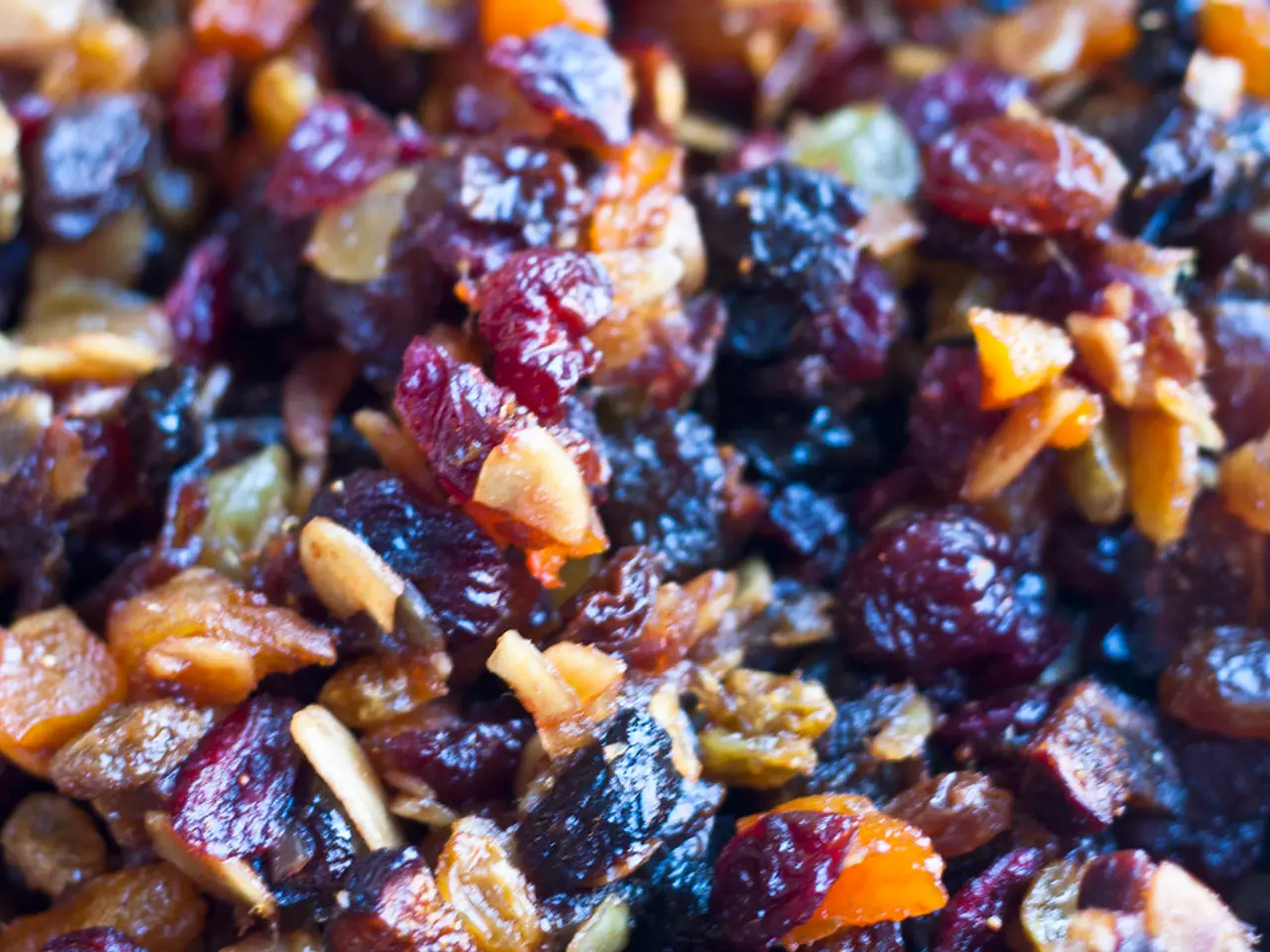Guide on a Strict Diet Regimen and Steps to Adhere to It
A short-term cutting diet is a strategic approach to weight loss, designed to help individuals lose body fat while preserving muscle mass. This type of diet is commonly followed by bodybuilders and fitness enthusiasts after a bulking phase, where muscle mass is gained through a high-calorie, protein-rich diet and intense weightlifting.
The core principles of a cutting diet revolve around creating a calorie deficit, maintaining a high protein intake, strength training, proper nutrient timing, and emphasizing micronutrient density. The aim is to consume fewer calories than one burns, but the deficit should be moderate to help sustain muscle. Protein intake should be around 1.6 grams per pound of body weight daily to support muscle retention and recovery. Strength training is essential to signal the body to preserve muscle, even as fat is lost. Nutrient timing prioritizes carbohydrates around workouts to fuel training and recovery, while keeping fats higher during other meals for satiety. Micronutrient density is achieved by emphasizing a variety of fruits and vegetables.
A nutrient-dense, balanced approach is key when planning meals. Focus on lean proteins, whole grains, healthy fats, vegetables, fruits, and dairy or dairy alternatives. Examples of foods from each group include chicken, brown rice, avocados, leafy greens, Greek yogurt, and nuts.
Useful tips for a cutting diet include portion control, regular weigh-ins, meal planning, and consulting a dietitian or personal trainer. Some people choose to have cheat days or refeed days to ensure they receive essential vitamins and minerals from food and to increase energy and performance.
To achieve weight loss, a person needs to use more energy than they consume, a concept known as creating a "caloric deficit." During the cutting period, a person's body mass decreases, and their metabolism adapts, requiring adjustments to the number of calories consumed. Weekly weight loss in a cutting diet should be approximately 1-2% of body weight.
In conclusion, a short-term cutting diet, when followed correctly, can help individuals lose body fat while preserving muscle mass. It is essential to maintain a balanced diet, focus on portion control, and consult with a dietitian or personal trainer for guidance.
- It's crucial to remember that a cutting diet, with its focus on multiple nutrients like proteins, carbohydrates, fats, and micronutrients, can also be beneficial for individuals managing conditions such as multiple sclerosis or bipolar, as part of a health-and-wellness approach.
- For those battling lung cancer, such as NSCLC, or dealing with depression, adhering to a balanced diet during a cutting phase could potentially aid in their overall recovery and well-being, in addition to conventional treatments and therapies.
- Science continually invests in the predictive and preventive role of nutrition in various health aspects, including weight management, fitness-and-exercise, and sports performance, making it a vital component in our lives beyond just weight loss.
- A well-planned cutting diet emphasizes avoiding processed foods and focusing on whole foods such as lean proteins, whole grains, healthy fats, vegetables, fruits, and dairy or dairy alternatives, thus promoting a lifestyle centered around nutrition.
- It's essential to take note of the importance of other nutrition factors in maintaining a balanced diet, such as keeping an eye on calories, drinking adequate water (AQ), and ensuring proper nutrient timing to fuel workouts and recovery.
- To maintain sustainable results, it's advisable to combine a cutting diet with regular fitness-and-exercise routines, focusing on activities like sports and sports-related exercises to help keep the body functioning optimally while losing unwanted body fat.
- Maintaining a healthy weight isn't only about aesthetics; it also plays a significant role in overall health, reducing the risk of obesity-related health issues like diabetes and heart disease.
- Lastly, remember that a cutting diet is not a one-size-fits-all solution, and it's essential to consult a dietitian or personal trainer for personalized guidance, catering to individual needs and considering factors like current health status, dietary restrictions, and fitness goals.




